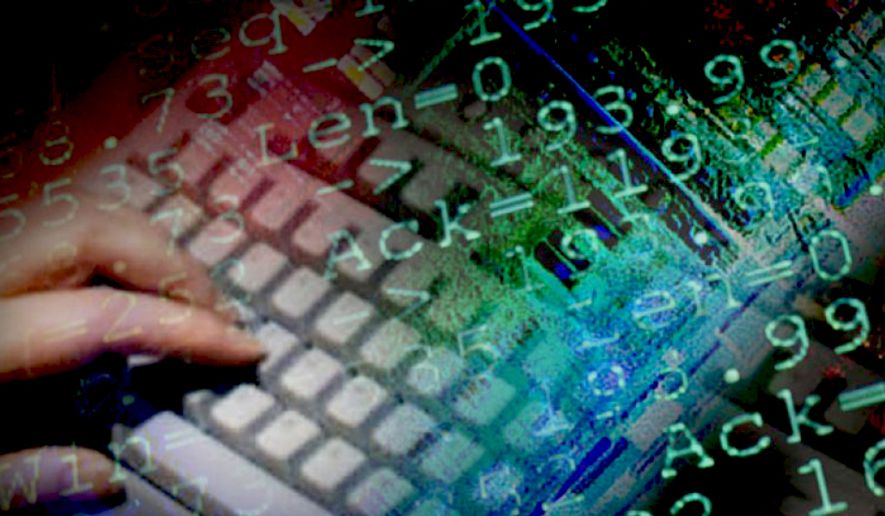The U.S. government’s new counterintelligence strategy is prioritizing areas of society under attack instead of focusing on the top nation-state adversaries threatening America, said the head of U.S. counterintelligence, who labeled it a “paradigm shift” for the intelligence community.
The purpose of the new approach is to advance a strategy that does not singularly rely upon government-centric solutions, said William R. Evanina, director of U.S. counterintelligence.
Mr. Evanina said the new strategy focuses on threats to critical infrastructure, U.S. supply chains, the economy, American democratic institutions, and cyber and technical operations.
“With the private sector and democratic institutions increasingly under attack, this is no longer a problem the U.S. government can address alone,” Mr. Evanina said. “It requires a whole-of-society response involving the private sector, an informed public, as well as our allies.”
The strategy looks to combat three trends identified by the intelligence community: The number of “threat actors” from nations and non-state groups is growing, the threat actors have “increasingly sophisticated” intelligence capabilities and technology, and that the bad actors are expanding their list of targets in America.
The strategy acknowledges that the U.S. counterintelligence community alone is incapable of mitigating the threats from foreign foes and it issues a call to action for those not working in government.
“We must marshal the U.S. government, public and private partners, foreign allies and institutions, and the American public to adopt a more proactive counterintelligence and security posture and deter our adversaries from conducting intelligence activities that put our people, economy, information, systems, and intellectual property at risk,” the strategy states.
Foreign influence operations underway by adversaries inside American laboratories and academic and research institutions have “cost the United States hundreds of billions of dollars,” according to the report.
Among the top adversaries identified in the strategy are an “aggressive” Russia, a “more powerful and emboldened” China, non-state actors such as the Islamic State and al Qaeda, ideologically motivated hacktivists, and foreign nationals with no formal ties to any official intelligence service.
Mr. Evanina told reporters Monday that the intelligence community needs to break down the legal and political barriers preventing it from communicating with the private sector.
“We have to get more creative in the way we share information back and forth,” Mr. Evanina said.
Mr. Evanina said 2019 was the “worst year ever” due to insider threats inside and outside of government, echoing his remarks to a gathering of cybersecurity professionals last week that the political issues dominating the news have distracted from critical threats. He pointed to recent breaches in academia and industry groups and events unfolding at Harvard University.
Late last month, the Justice Department charged Charles Lieber, the head of Harvard’s chemistry and biology department, with making false statements regarding his participation in a Chinese effort to recruit researchers.
China is principally behind the assault on American intellectual property and its target set is “hiding in plain sight” via the “Made in China 2025” plan, according to David Laufman, former Justice Department official who oversaw the probes of Russian influence in the 2016 election and former Secretary of State Hillary Clinton’s private email and server.
The Chinese plan identifies 10 manufacturing industries where it wants to become the world leader, and Mr. Laufman said there was a “close correlation” between the public criminal prosecutions brought by the Justice Department in recent years and the Chinese plan.
“In some respects, you can identify the most vulnerable companies with respect to the industries they are involved in: the semiconductor industry, for example,” Mr. Laufman said. “We’ll see whether the new January [U.S.-China] trade agreement brings any halt or diminution in Chinese state-sponsored theft of U.S. intellectual property or theft by proxies operating on behalf of China. Time will tell but color me skeptical.”
Mr. Evanina told The Washington Times the new counterintelligence strategy as it pertains to China developed organically, rather than being directly responsive to the Made in China 2025 plan.
He said the classified version of the strategy is dozens of pages longer than the unclassified version shared with reporters, and identifies specific threats not included in the version provided to press. He said he wanted the whole-of-society approach outlined in the public strategy to communicate a simple message to American adversaries.
“It’s a message to the world: We’re onto you,” Mr. Evanina said.
• Ryan Lovelace can be reached at rlovelace@washingtontimes.com.




Please read our comment policy before commenting.